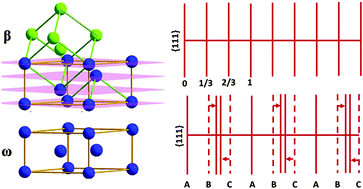Misfit stabilized embedded nanoparticles in metallic alloys
Abstract
Nanoscale inhomogeneities are typical for numerous metallic alloys and crucially important for their practical applications. At the same time, stabilization mechanisms of such a state are poorly understood. We present a general overview of the problem, together with a more detailed discussion of the prototype example, namely, Guinier–Preston zones in Al-based alloys. It is shown that coherent strain due to a misfit between inclusion and host crystal lattices plays a decisive role in the emergence of the inhomogeneous state. We suggest a model explaining the formation of ultrathin plates (with the thickness of a few lattice constants) typical for Al–Cu alloys. Discreteness of the array of misfit dislocations and long-ranged elastic interactions between them are the key ingredients of the model. This opens a way for a general understanding of the nature of (meta)stable embedded nanoparticles in practically important systems.


 Please wait while we load your content...
Please wait while we load your content...